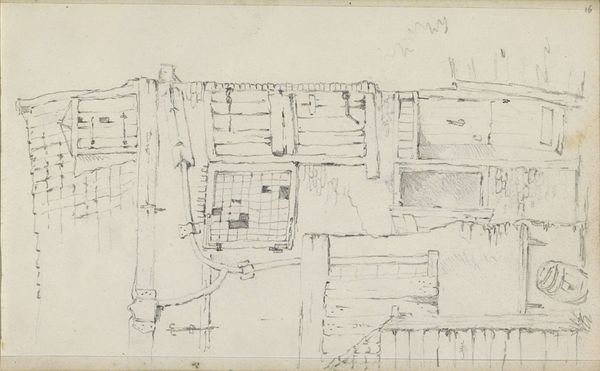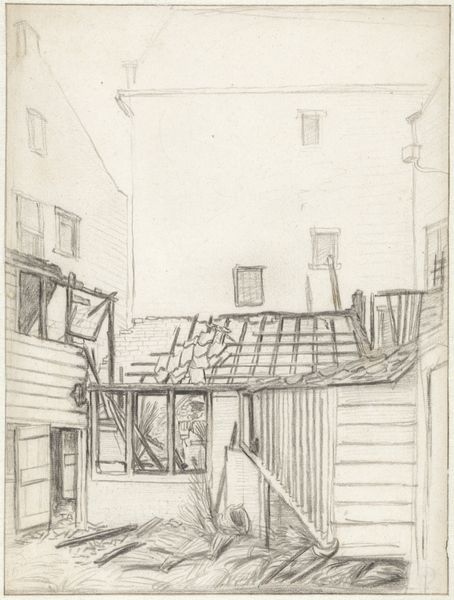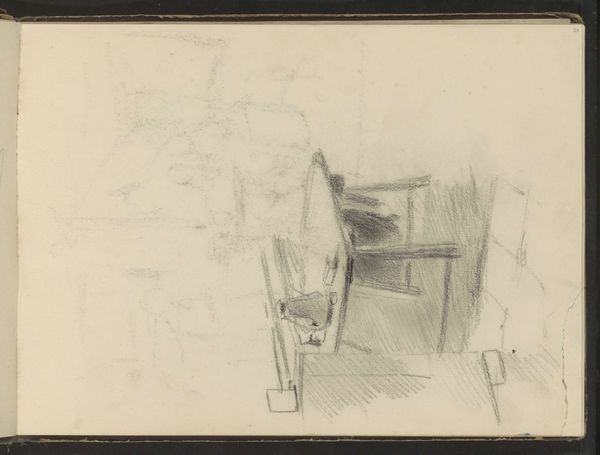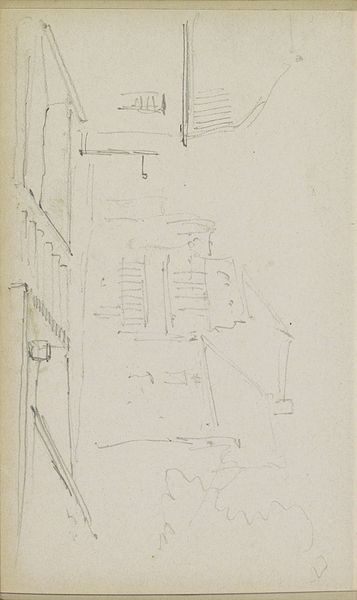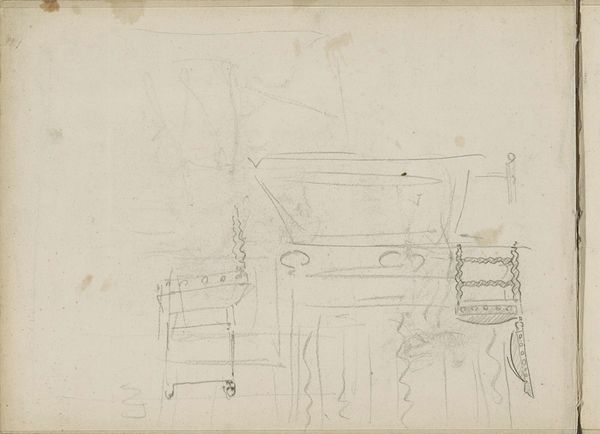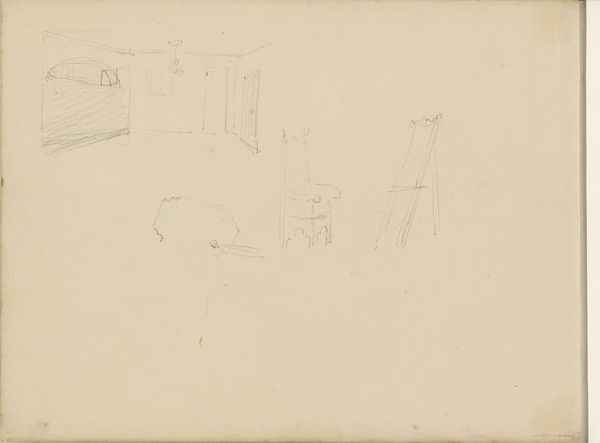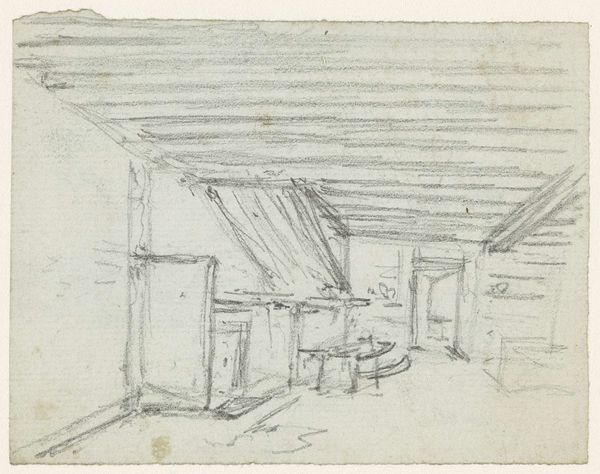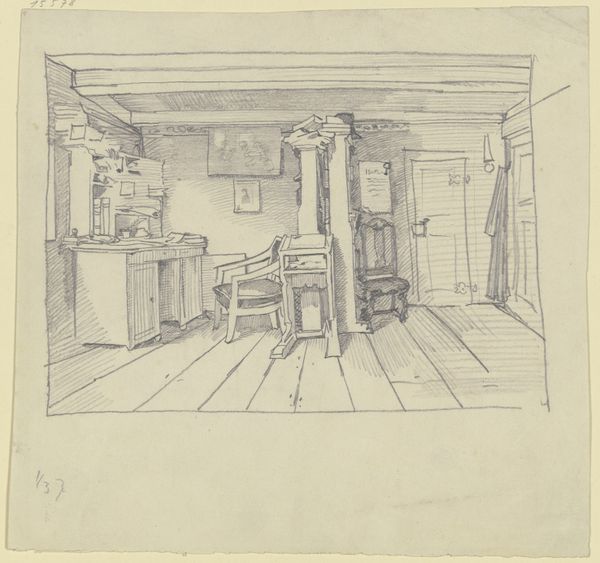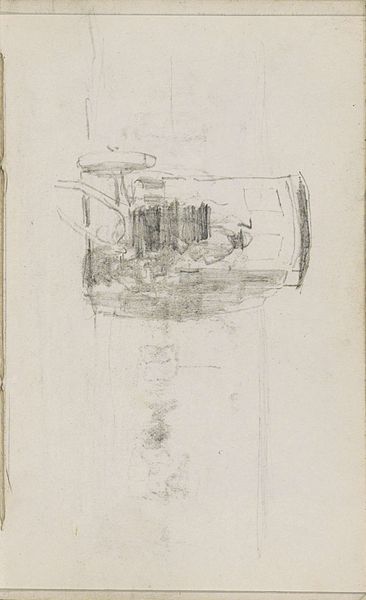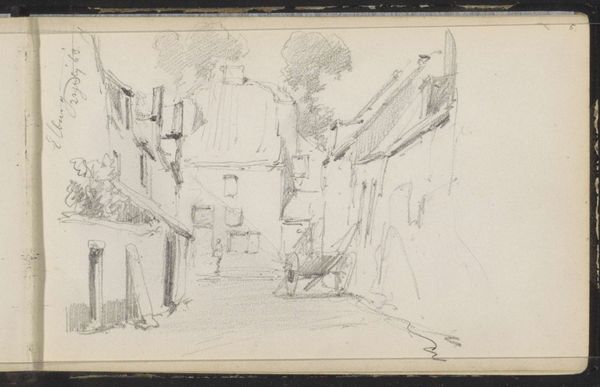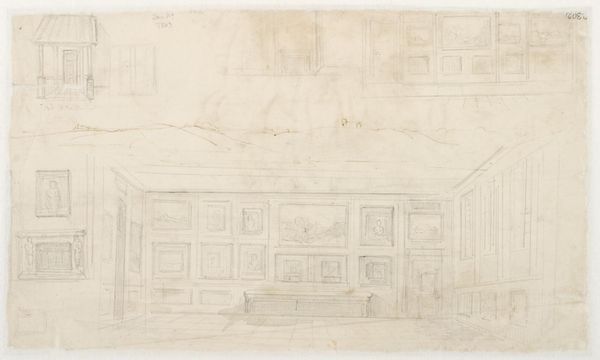
drawing, pencil
#
architectural sketch
#
drawing
#
aged paper
#
toned paper
#
quirky sketch
#
dutch-golden-age
#
sketch book
#
form
#
personal sketchbook
#
sketchwork
#
pencil
#
line
#
sketchbook drawing
#
genre-painting
#
storyboard and sketchbook work
#
sketchbook art
#
realism
Dimensions: height 119 mm, width 145 mm
Copyright: Rijks Museum: Open Domain
Curator: Let's take a look at Adriaen van Ostade's "Corner of the Interior of a Barn," a pencil drawing dating from between 1640 and 1660. It's currently held at the Rijksmuseum. Editor: My first impression is how sketch-like and almost intimate this rendering of the interior is. There’s an immediate feeling of everyday life being captured. Curator: Ostade was deeply engaged with capturing everyday life, particularly the lives of peasants and working-class individuals. The dilapidated barn interior is itself a powerful social commentary. Consider the Dutch Golden Age's emphasis on prosperity and trade—Ostade presents an alternative reality of those excluded from such wealth. We need to remember the complexities of class and social mobility during this period. Editor: I agree. And technically, note how he renders light using very simple linear strokes. The network of interwoven lines gives the barn a very lived-in quality, but I find it more of a study of form rather than social commentary. It’s as if the artist is more interested in describing the composition. Curator: The composition cannot be separated from its socio-historical context, however. By placing this humble setting into the artistic landscape, he inevitably elevates the subjects it contains: the poor and the overlooked, reminding viewers of their plight. His choice of subjects and the realism underscores a sense of unvarnished truth that has a powerful connection to the social narrative. Editor: While I respect your emphasis on socio-historical elements, I see an economy of means here. His formal skills with line and shape precede the storytelling; look at the way he's described that barrel on the shelf, or even the rungs of the ladder with only a few precisely placed lines. Curator: And yet, it is precisely Ostade’s observational talent—his sharp eye for detail rooted in real, observed spaces, the details—that grants insight into the conditions of life at this time. He makes these people visible; in effect, this artwork functions as an act of witnessing, wouldn’t you agree? Editor: Ultimately, his approach invites one to examine the beauty, simplicity, and formal sophistication present in seemingly mundane spaces. Curator: Exactly. These pieces ask that we reconsider history and value not from an aesthetic distance alone, but through a humanistic lens, understanding that artistic choices often mirror societal challenges.
Comments
No comments
Be the first to comment and join the conversation on the ultimate creative platform.

